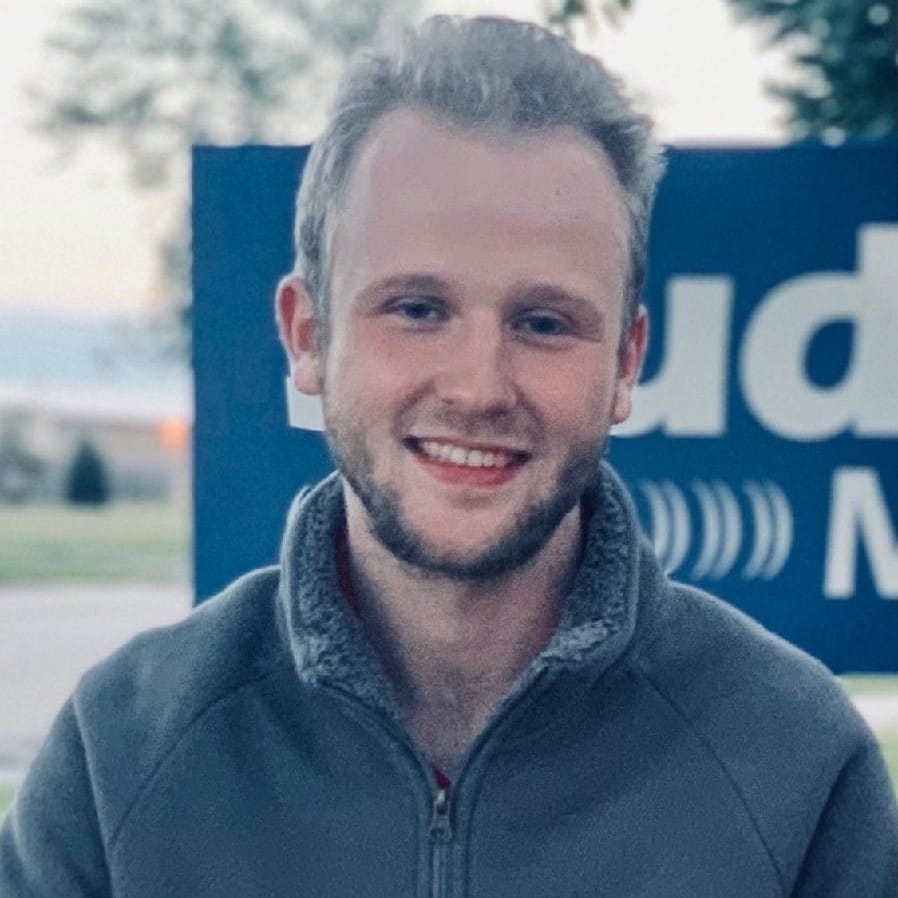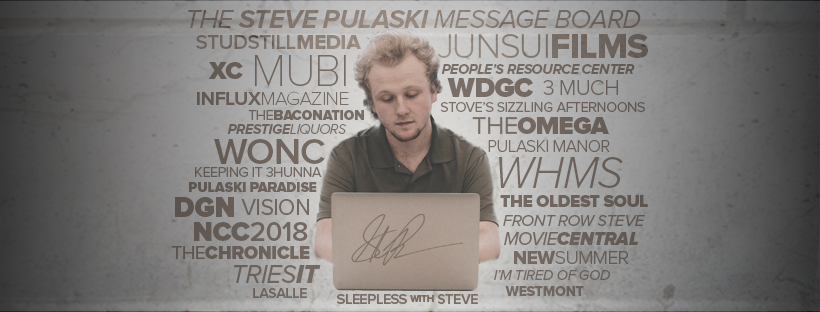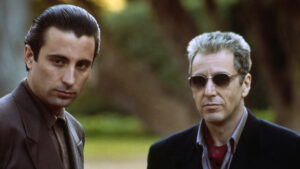Publication Date: 06-18-2025
The Godfather: Part III (1990) review
Dir. Francis Ford Coppola
By: Steve Pulaski
Rating: ★★
In continuing (and concluding) the saga of Michael Corleone (Al Pacino), The Godfather: Part III catches him in a pensive yet determined state of mind. Rattled by guilt in his old age with plans to legitimize his criminal empire, Michael looks to Corleone-partnered businessman Joey Zasa (Joe Mantegna) as the man to helm a massive deal with the Vatican Bank. The deal would help the bank clear its debts in exchange for substantial, controlling shares in a sister real estate company, a move that would make Michael capable of appointing himself and others to its board of directors. The Corleone’s couldn’t make a deal with God, so they opted to get the man of God to permit them to sign the dotted line.
Meanwhile, Michael’s head is still desired by feuding families intent on disrupting his quest for creating harmony and solidifying a legacy. He takes his nephew, Vincent (Andy García), under his wing as a protégé, and places the street-wise soul on the frontlines of business that walks a fine line between lawful and unlawful. Vincent also becomes romantically involved with his first-cousin, Mary (Sofia Coppola), who is kept unaware of her father’s role in the mob. Vincent’s training wheels don’t even come off before he recognizes there is something shady going on with Zasa amidst this Vatican deal. With that, a familiar assassination attempt has Michael deeply contemplating his future, and he does his best to talk through deep-seated issues with his ex-wife Kay (Diane Keaton) and Don Altobello (Eli Wallach), a partner of Zasa’s.
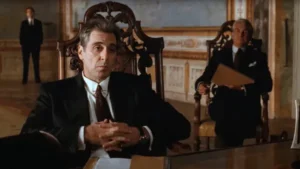
All of this and more unfolds in the divisive but nonetheless fascinating conclusion to what is still one of the most respected series in American film. Even with the albatross of this underwhelming third-part, The Godfather: Part III has certain appeal as both a movie and a sequel with a task more daunting than its predecessor. Part II had the ostensibly insurmountable task of trying to at match the level of greatness of the original and somehow did it even with a hefty storyline. Part III not only has to follow one great film, but two, and unfortunately suffers significantly due to a questionable narrative, weak supporting characters, and the sense that its existence is more an accessory than a nail-biting continuation of the Corleone dynasty.
Originally never intended to come to fruition, Part III came about after the catastrophic financial failure of several Coppola films in the 1980s, including One from the Heart, Gardens of Stone, and Tucker: The Man and His Dream. With depleting finances, fading relevance, and intense pressure from Paramount to cap-off what was seen as the perfect trilogy in the making (despite their initial hesitance with Part II), Coppola signed on in a move he makes no qualms about justifying was due to his own financial uncertainty. Whether we as people like to admit it or not, most of us look to the familiar in times of distress for our own sake, and The Godfather: Part III is proof that desire for comfort and soothing ground doesn’t even escape one of the most cherished filmmakers in the history of the medium.
Beginning with the narrative, the film never adopts the coherency of the previous installments. This is a tricky complaint because the same accusation has been levied against Part II for its juxtaposition of Vito Corleone’s humble beginnings with Michael’s own rise amidst a combative landscape amongst mob families. Part II succeeded in treating both stories as if they were one film, intersecting at appropriate times with Coppola and Mario Puzo cautious in a screenwriting sense of when to begin and end a scene (or a scene within a scene). From New York to Sicily, the Vatican to the opera, Part III hops around rather recklessly, sometimes aimlessly, with extended dialog devoted to the Corleone negotiations with the Catholic Church that become more of a plot burden than a tool for immersion.
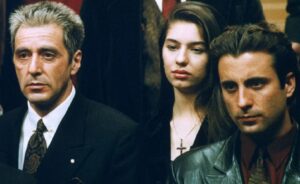
Thanks to all the heads that rolled in the previous part, The Godfather: Part III is also forbidden from housing the host of recognizable supporting performers that made the franchise so dense in its talent. Gone are the wise-words and guiding hand of Robert Duvall’s Tom Hagen and no more is the sympathetic appearance of a worn down Fredo, who was played so effectively by John Cazale. Instead, an uneven mesh of cross-generational talent bleeds into the overall product. Andy García’s Vincent is far and beyond the best of the new faces, providing the kind of youthful freshness that plays into the “legacy” subtext ubiquitous enough to be considered the surface-text of the film. García is always so slick in his supporting roles, to the point where he bleeds into the backgrounds in his films due to the more domineering presence of other characters/actors, which is perhaps why he still doesn’t seem to get much love for his role here. Mantegna’s simply fine as Zasa, only truly great in one scene involving Vincent, while Talia Shire and her Connie character are made more irksome in their role and Wallach not as strong Michael V. Gazzo in Part II.
As far as Sofia Coppola’s much-maligned performance as Mary is concerned, it’s no secret: she’s not great. At 19-years-old, she’s clearly overwhelmed by the accomplished talent around her, as anyone would be in her position. Her shaky presence does indeed loan some credibility to her character being so consistently out of her element, yet realism in this regard still renders scenes between her and Pacino’s Michael to be awkward and unmoving. From a writing perspective, it’s also not particularly clear what makes Vincent drawn to Mary in the first place. Mary seems motivated by the dueling forces of security and danger she perceives around him (notwithstanding the need for connection within her own extended family), while Vincent has no logical reason to become involved with Mary, especially given his growing closeness to her father. Had the emotion and passion existed between the two, it would’ve been acceptable, but it seems like a needless subplot that only calls into question the decision-making of Coppola — who before we could almost trust without second thought.
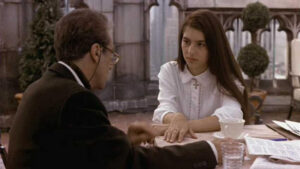
One also gets the sense that both Coppola and Puzo were running out of things for the Corleone family to do, largely due to how much time is spent on the Vatican deal. This goes back to the way The Godfather: Part II concluded; with no stones unturned and few essential characters left breathing. In Part III, a perpetual state of “now what-ness?” looms over the characters like a post-war fog. As a result, Michael and Kay’s relationship feels like that of a college couple who broke up many moons ago yet still feels the need to come back together and try to address what went wrong. The earnest discussions between Michael and Vincent are limited, and while it’s possible that some scenes examining Vincent’s rise to power would’ve made for an intriguing angle, it’s likely it would’ve made a paradoxically bloated and undernourished film that much more convoluted in its narrative focus.
Even with these gripes, I can’t bring myself to call The Godfather: Part III a blemish on the trilogy. Despite being the shortest of the three films yet still somehow feeling like the longest, there are some admirable strengths within this epic that most bad films would be hard-pressed to include. The third-act juxtaposition of Cavalleria rusticana with the Corleone family’s entire legacy of family sacrifice and old world conflict is an ambitious device to include, plus it’s successful at sustaining the suspense the editing gives it. Cinematographer Gordon Willis returns to further extrapolate his warm tones onto the film’s visuals that recall the days of yore for fans of the series as well. And while the melodies of Carmine Coppola’s score don’t generate the same effect Nino Rota’s versatile strings had for the previous films, they’re still capable of inspiring real resonance. The Godfather: Part III could be deemed as sloppy and as uncouth as the legacy of the Corleone’s, and deservedly so. But there’s still too much here to brush off as a flat-out disappointing endeavor — as disappointing as it ultimately is.
My review of The Godfather
My review of The Godfather: Part II
Starring: Al Pacino, Andy García, Diane Keaton, Sofia Coppola, Joe Mantegna, Eli Wallach, Talia Shire, Bridget Fonda, and Franc D’Ambrosio. Directed by: Francis Ford Coppola.
About Steve Pulaski
Steve Pulaski has been reviewing movies since 2009 for a barrage of different outlets. He graduated North Central College in 2018 and currently works as an on-air radio personality. He also hosts a weekly movie podcast called "Sleepless with Steve," dedicated to film and the film industry, on his YouTube channel. In addition to writing, he's a die-hard Chicago Bears fan and has two cats, appropriately named Siskel and Ebert!
